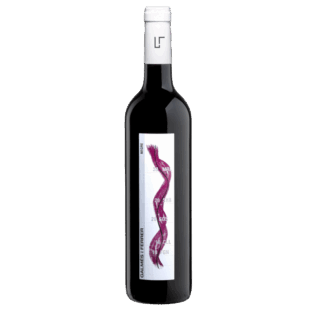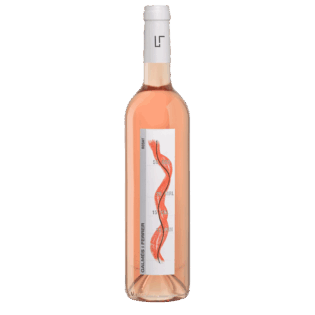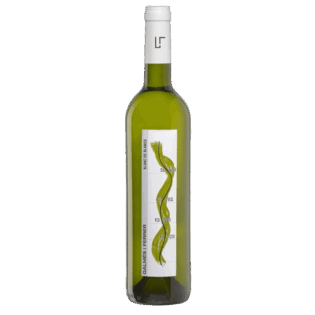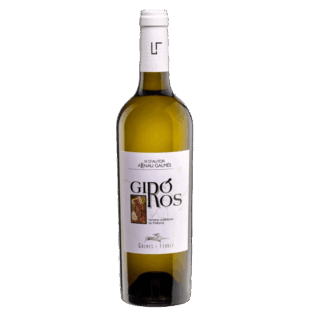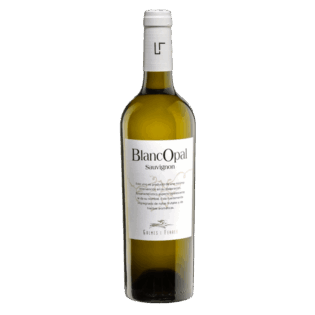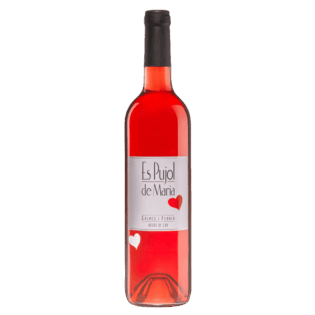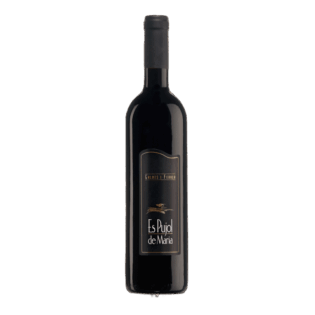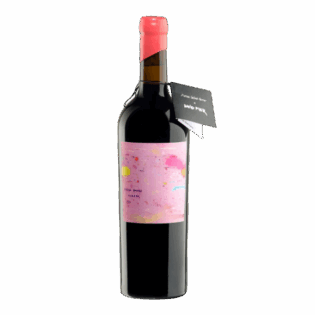Una nueva bodega, el libro de la Academia cata de gourmets, Perico Gual y Angel Zuasti.
U n a n u e v a b o d e g a , e l l i b r o d e l a A c a d e m i a c a t a d e g o u r m e t s , P e r i c o G u a l y A n g e l Z u a s t i .
Guillermo Galmés de Petra, y en Petra, elaboraba vinos rancios, mistelas, «vi sec», que tan bien le sienta a los guisados, y «vi de misa», de mucha fama. Los vendía a granel y se llamaban los vinos de Can Mec. Este hombre puso un hijo al mundo y este hijo – la gran ilusión de los padres -, que ya tiene 25 años, se ha hecho enólogo en Requena, y se ha diplomado en la Universidad Roviri i Virgili de Tarragona. Guillermo Galmés no cabe en sí de gozo. Y todo ha salido redondo.
En principio debemos decir que en 1970 se inició la construcción de una bodega en la calle Barracar Alt, 26. Se dice que tienen un celler muy hermoso. Nosotros no lo conocemos.
Ahora, con la incorporación del hijo que se llama Arnau, se han emprendido reformas, hacia las técnicas más modernas, y se ha iniciado la andadura de elaborar vinos de calidad y embotellarlos. En definitiva, podemos decir que Mallorca ha nacido la nueva Bodega Galmés i Ferrer. Ni que decir tiene que padre e hijo no caben en sí de lógica satisfacción.
Dentro de unos días esta nueva bodega presentará sus primeros vinos en la Vinoteca de Juan Luis, en la Plaza Virgen de Lluc. Hoy reproducimos la etiqueta de uno de estos vinos. Confiamos en que el joven Arnau Galmés, ayudado de la experiencia de su padre, que es mucha, contribuirá a seguir elevando el prestigio de nuestros vinos.
EL LIBRO EDITADO por la Academia de la Cuina i El Vi de Mallorca ha resultado un éxito de crítica y de venta. Tanto es así que en un comentario aparecido en una revista especializada que sale en Madrid, al observar que el libro está editado en lengua vernácula, añade que este detalle se supera con facilidad, y sin gran esfuerzo. Lo cual, en los madriles, es prueba de muy buena voluntad.
EN LA CATA anual de GOURMETS, en la que eligieron los Mejores Vinos de España de 1993, cuatro vinos mallorquines han obtenido buena plaza. Ni que decir tiene que en esta relación figuran, realmente, grandes vinos. Y bastante caros. Los caldos seleccionados son dos Tintos Crianza de Bodegas Herederos de Ribas, el 89 y el 90. Ambos vinos van con la calificación de 7’5.
Los otros dos clasificados son de las Bodegas José L. Ferrer, un Reserva 87, con un 8 de calificación y el Gran Reserva 84, con un 7’5. Estos vinos han superado el listón que esta revista últimamente ha subido.
AL BUEN GOURMET Perico Gual le cogieron de la palabra cuando dijo que sus patatas con chorizo podían compararse a las de Rioja. Con los Amics dels Vins, en Cas Cos, ante la natural expectación, Perico demostró que tenía razón. Presentó unas patatas muy buenas. Perico le tiene un gran cariño a la cocina y goza de la confianza de todos. Este año, la Escuela Profesional Fray Junípero Serra, presentará varios alumnos han sido enseñados y preparados por nuestro amigo Ángel Zuasti, enólogo de Bodegas Suau.

On occasion, the winemaker may decide to leave them in if the grapes themselves contain less tannin than desired. This is more acceptable if the stems have ‘ripened’ and started to turn brown. If increased skin extraction is desired, a winemaker might choose to crush the grapes after destemming.
Wine is one of the most civilized things in the world and one of the most natural things of the world that has been brought to the greatest perfection, and it offers a greater range for enjoyment and appreciation than, possibly, any other purely sensory thing.
Ernest Hemingway Tweet
Removal of stems first means no stem tannin can be extracted. In these cases the grapes pass between two rollers which squeeze the grapes enough to separate the skin and pulp, but not so much as to cause excessive shearing or tearing of the skin tissues. In some cases, notably with «delicate» red varietals such as Pinot noir or Syrah, all or part of the grapes might be left uncrushed (called «whole berry») to encourage the retention of fruity aromas through partial carbonic maceration.
The Grapes
The quality of the grapes determines the quality of the wine more than any other factor. Grape quality is affected by variety as well as weather during the growing season, soil minerals and acidity, time of harvest, and pruning method. The combination of these effects is often referred to as the grape’s terroir.
Grapes are usually harvested from the vineyard from early September until early November in the northern hemisphere, and mid February until early March in the southern hemisphere.
In some cool areas in the southern hemisphere, for example Tasmania, harvesting extends into May. The most common species of wine grape is Vitis Vinifera, which includes nearly all varieties of European origin. The most common species of wine grape is Vitis Vinifera, which includes nearly all varieties of European origin.

Manual harvesting is the hand-picking of grape clusters from the grapevines. In the United States, some grapes are picked into one- or two-ton bins for transport back to the winery. Manual harvesting has the advantage of using knowledgeable labor to not only pick the ripe clusters but also to leave behind the clusters that are not ripe or contain bunch rot or other defects. This can be an effective first line of defense to prevent inferior quality fruit from contaminating a lot or tank of wine.
Destemming is the process of separating stems from the grapes. Depending on the winemaking procedure, this process may be undertaken before crushing with the purpose of lowering the development of tannins and vegetal flavors in the resulting wine. Single berry harvesting, as is done with some German Trockenbeerenauslese, avoids this step altogether with the grapes being individually selected.
Crushing is the process when gently squeezing the berries and breaking the skins to start to liberate the contents of the berries. Destemming is the process of removing the grapes from the rachis (the stem which holds the grapes).
In traditional and smaller-scale wine making, the harvested grapes are sometimes crushed by trampling them barefoot or by the use of inexpensive small scale crushers. These can also destem at the same time. However, in larger wineries, a mechanical crusher/destemmer is used. The decision about destemming is different for red and white wine making. Generally when making white wine the fruit is only crushed, the stems are then placed in the press with the berries. The presence of stems in the mix facilitates pressing by allowing juice to flow past flattened skins.

